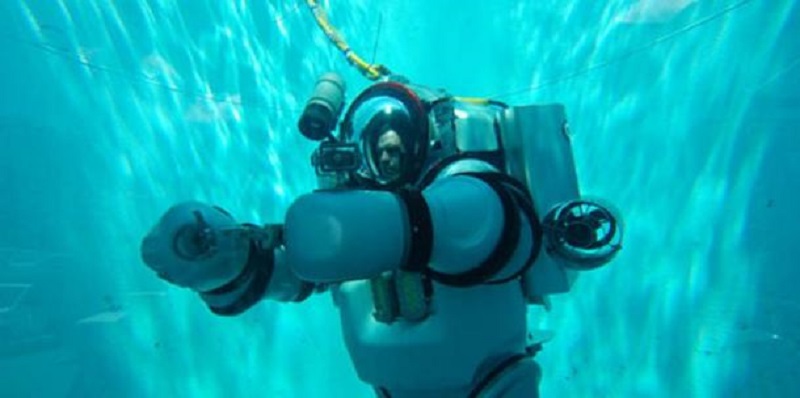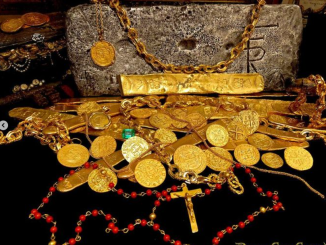Some of the world’s greatest archaeological discoveries have been discovered by accident. For example, the terracotta warriors were first discovered in 1974 by Chinese farmers while digging wells. Likewise the discovery of the shipwreck of the Antikythera, recently dubbed the ‘Titanic of the ancient world’.
In October 1900, a group of Greek sponge divers returning from North Africa encountered a fierce storm. At Antikythera Island, divers anchored their boats and waited for the storm to subside. While at Antikythera, some of the crew decided to dive along the island’s shoreline in search of clams for a meal. One of the divers, Ilias Stadiatis, stumbled upon something much more remarkable – the remains of a ship lying at a depth of between 42 and 50 meters under the sea. Stadiatis even brought an arm from the bronze statue from the wreck to his companions, who must have been quite surprised by the find.
The following month, Captain Dimitrios Kontos informed the Athenian authorities of the discovery of the shipwreck. Officials wasted no time and Mykali, a ship of the Royal Hellenic Navy, was dispatched to Antikythera to assist with recovery operations. Later, the civilian steamship Syros and the Navy torpedo boat Aigialeia were also sent to the island.
Over the next few months, Greek divers made extensive efforts to salvage the wreck. At the time, standard diving equipment was a thick cloth suit and a bronze helmet. The divers who salvaged the Antikythera shipwreck had only one of these suits to share, and each diver only dived for ten minutes, twice a day.
At the end of the mission in September 1901, only five men were still healthy enough to dive. Two men were paralyzed by decompression sickness and another unfortunately lost his life. Through the efforts and sacrifices of these divers, many artifacts, including several bronze and marble statues, glassware, and amphorae were brought to the surface, then sent to the Museum National Archeology of Athens.
One of the most important discoveries of the Antikhythera shipwreck was an object known today as the Antikhythera mechanism, described as the world’s first analog computer.

The amazing Antikythera mechanism was found in a shipwreck off the island of Antikythera in Greece. Credit: Tilemahos Efthimiadis / Flickr
Due to the dangers of diving at such depths and the lack of more modern equipment, salvage operations could not continue. It was only in 1953 and again in 1976 that the famous French explorer Jacques-Yves Cousteau briefly visited the Antikythera shipwreck site.
In 1953, Cousteau and his team were only at the site for three days, although that sampling was enough to take him back in 1976 to film the episode ‘Diving for Roman Looters’ of the 1970s documentary series his, The Cousteau Odyssey.
Apart from these two periods, the site remained undisturbed for decades. Although no further exploration was carried out, there were enough artifacts from the site for archaeologists to date the wreck. While some bronze statues date to the 4th century BC, and some marble statues are copies of earlier statues of the 1st century BC, it is Carbon dating of the ship’s wood dated it, giving a calendar-calibrated date of 220 BC ± 43 years. However, based on other observations, it has been proven that the ship sank only around the first century BC, perhaps about two centuries after it was built.
Representatives of the Greek government, crew and sponge divers on the deck of the Greek naval ship Mykali in the winter of 1900/1901, pulling objects from the shipwreck Antikythera (Wikimedia).
It was only in September 2014 that the investigation into the Antikythera shipwreck continued under the ‘Return to Antikythera’ project. Armed with the latest technology, the research team sets out to unlock the secrets of the wreck. Using a hybrid closed-circuit ventilator and an Exosuit, this project’s divers are in a much safer position than their predecessors. An autonomous robot carrying a stereo camera and sonar was used to map the site.
The team achieved success by obtaining evidence that the ship was 50 meters long, much larger than previously thought, hence the nickname ‘Titanic of the ancient world’.
With further investigation, what more will we know about the sinking of the Antikythera?
Exosuit (robot suit with a human controller inside) was developed by Nuytco’s research team. Source: American Museum of Natural History
Featured image: Metal detector survey at the shipwreck site, photo by Brett Seymour. Photo source: antikythera.whoi.edu.




